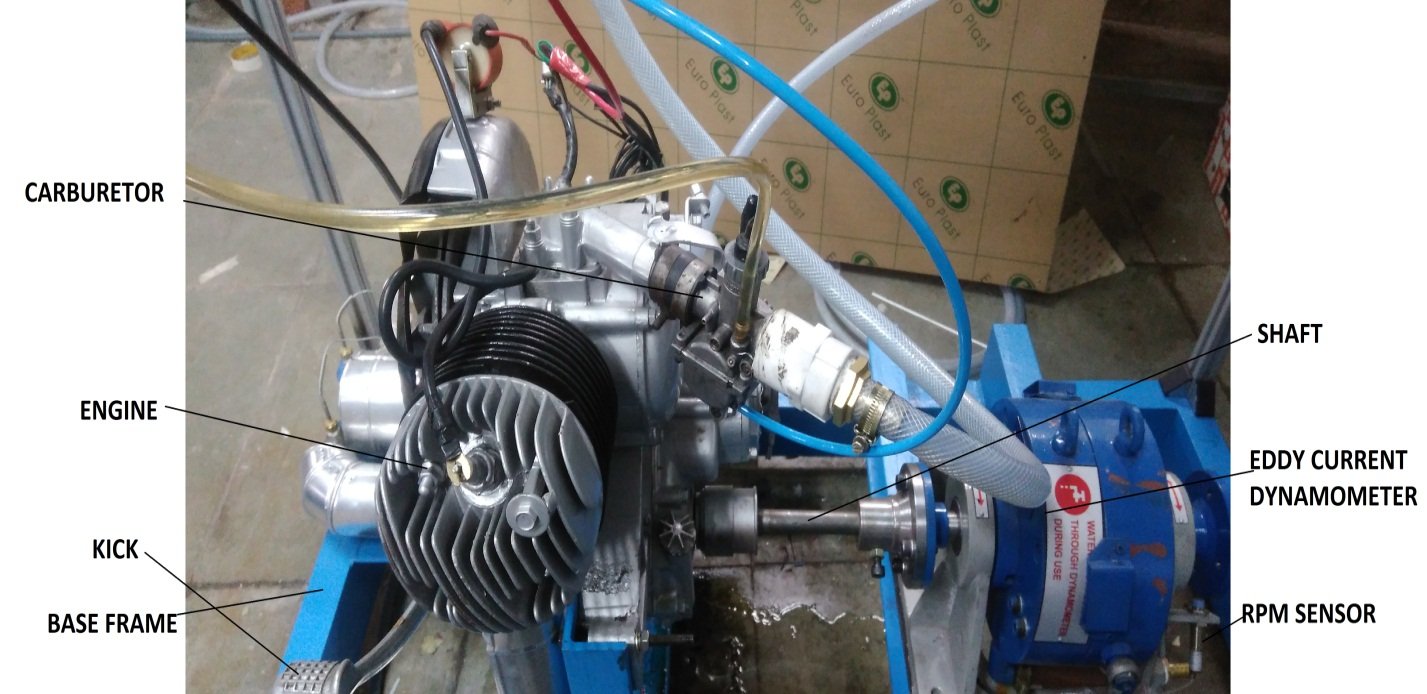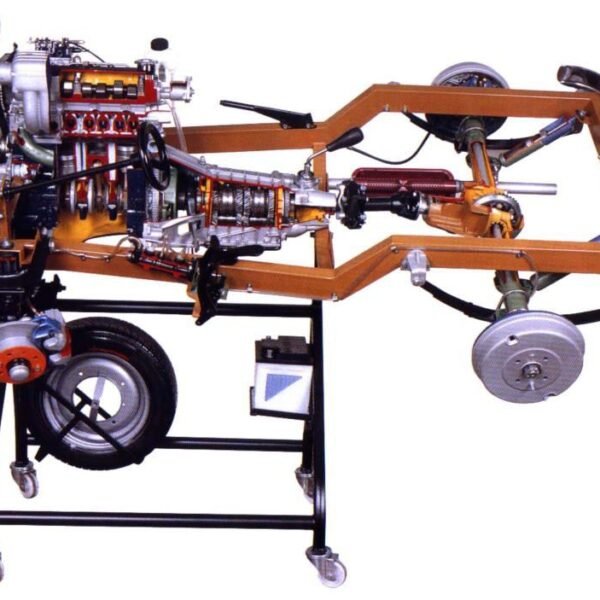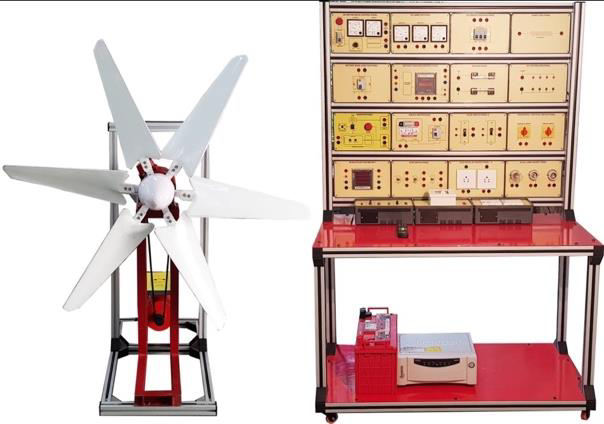Automotive Single Cylinder 2 Stroke Petrol Engine Model AM 219
The air-cooled single-cylinder two-stroke petrol engine is identical in design to the four cylinder engine. The engine includes a sensor to measure the exhaust gas temperature. The sensor, ignition cut-off and fuel supply are connected to the engine test stand.
SYSTEM DESCRIPTION
Components of System:
1. Base stand – It is made up of Mild steel structure as per the system configuration on which all components are mounted. “C-channels of 50×100 mm and Angles of 50×50 mm have been used. This is painted specially with powder coating.
2. Aluminum structure – It is made up of extruded aluminum section of having cross-section 30×30 mm. A panel is mounted on the aluminum structure.
3. Engine – Engine is mounted on the base frame which is coupled to the eddy current dynamometer.
4. U Tube Manometer- This trainer consists of a U-tube manometer made up of acrylic. It has 2 tubes, both being short at their bottom to measure suction pressure of engine for air. Manometer used in this setup has range of 0-300 mm. Scale provided with it makes it easy to take reading.
5. Fuel Meter –It is made up of acrylic and mounted on the main Panel on the right hand side. It is used to measure the fuel consumed by engine in particular time interval. It has got range of 0 to 230 mm. It is connected to the manifold through a mini ball valve which is used to control the flow.
6. Rotameter– It is made up of acrylic block which is used to measure flow rate of water through calorimeter.
7. Calorimeter –It is mounted on the base frame and powder coated. It is a shell and tube type heat exchanger in which exhaust gas exchanges heat with water. It is to measure heat of exhaust gas. Temperature sensors are mounted on it to measure the temperatures of the exhaust gas.
8. Load Cell Unit: Load cells are differential type transducers which give the readings according to their displacement. They made of anodized aluminum having a shape of English alphabet “S”. The output generated by the load cell can be directly read from the load indicator. The load cell arrangement is done as shown in the photo. Tension type of the load cell is used for measuring the load given to the dynamometer. The load cell indicator is given on the control panel with the zero setting buttons such that we can adjust zero for measuring the load given to the dynamometer.
9. Temperature Sensors and Indicator – They are 3 wire temperature sensors with 3 inch stainless steel probe and 1 m cable length. They are used to measure the temperature and connected to the temperature indicator which shows the reading in unit °C
10. Rpm Sensor and Indicator- It is a inductive proximity sensor which is used to measure the rotation per minute of the shaft. It is robust in construction and detects the rotation of the screw mounted on the shaft. Output of RPM sensor is given to RPM indicator which shows the angular speed of the shaft in RPM.
11. Air tank – It is made of mild steel and powder coated. An orifice is provided on one side and the other side is connected to engine air suction through a flexible hose. It is mounted on the aluminum structure. A pressure tapping is provided on it to measure the mass flow of the air sucked by engine.
12. Manifold – It is made of acrylic block with 1 inlet and 2 outlet. It takes fuel from its inlet from fuel tank and gives it to fuel meter from it outlet. Ball valves are provided for that reason.
13. Eddy Current Dynamometer – A dynamometer, or “dyno” for short, is a machine used to measure torque and rotational speed (rpm) from which power produced by an engine or any other rotating prime mover can be calculated. Dynamometers are used for measurement of brake power. To measure brake power, the engine torque and angular speed have to the measured. The rotor is driven by the engine under test by .mechanical, hydraulic or electromagnetic means. The rotor is coupled to the stator. For each revolution of the shaft. Rotor covers the distance 2×R×F against coupling force F. Work done = 2×R×F
14. Vibration Pads – These are anti-vibration mountings which are round in shape. These are fitted to the base frame with nut bolting.
15. Piping: Piping is done in UPVC and flexible hose. The ball valves are provided to control the flow rate.










